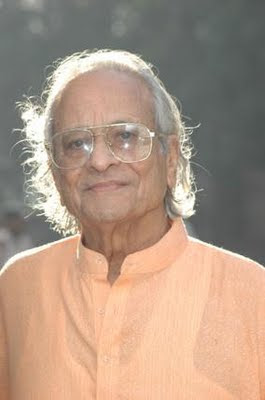Baby boomers may remember classical sitar player Ravi Shankar from his legendary appearances at the 1967 Monterey Pop Festival and Woodstock, or his influence on popular music culture at the time.
But what the 91-year-old musical icon remembers most about Monterey was hearing live rock 'n' roll for the first time. It was loud, he recalls, and he walked out on Jimi Hendrix burning his guitar.
The three-time Grammy winner appears for one night, September 29, in Los Angeles at the Disney Concert Hall, and ahead of the show he spoke to Reuters about his music, his memories of the '60s and his friendship with late Beatle George Harrison. Here is a piece of the interview.
Q: You collaborated with many high-profile Western artists in the past. In what direction are you taking your music now?
A: "Mostly I'm playing concerts. I just finished five concerts in Europe, in London, Birmingham and the Edinburgh Festival, then I went to Oslo, Norway. I finished those and now I'm looking forward to playing San Francisco and Escondido."
Q: What's on the program for the Disney Hall show?
A: "I always decide what I will play at the last moment, but I can tell you the format. I always start with very traditional classical music. The first I think will be very traditional almost dating back to 16th century. The second is a more later development known as contemporary-classical music. Another raga, an Indian raga. It's more popular, not in the pop sense, but it's a more popular second song. Of course the form we play is known as raga. Popular music with a lot of rhythmic variations."
Q: Can I take you back to the Monterey Pop Festival? It was a landmark concert and introduced you to your largest American audience. What are your memories of that show?
A: "I'll tell you very frankly, I went to see the whole night show with people like Jimi Hendrix and The Who, Simon and Garfunkel, Otis Redding, the Mamas and the Papas, all these people were performing. This was my first orientation to listening in person to live performances of rock 'n' roll. It was very loud for me. I'm not used to such loud music.
"But when The Who started breaking their instruments after the songs, and they are kicking them and breaking all the instruments -- and Jimi Hendrix, after a wonderful performance, which I was so impressed with, then he took off his guitar and then he put benzene on the guitar and burned it. That I could not take. I just walked out and said, "I won't be here."
Q: But two years later at Woodstock, you did it all again.
A: "It was a horrible experience because it was raining. We went by helicopter, which landed behind the stage. There were a half a million people, it was raining, drizzling, there was mud everywhere and everybody was, most of them, were high on drugs, y'know. And this was very difficult for my instrument, and I was not happy because of the whole environment."
Q: Still, you gained fame in the West from those events
A: "There was one issue that always bothered me. They mixed my music with drugs and all that type of free love and everything. That's what I objected to. I wanted to bring them consciousness of our music to relate to like Bach, Beethoven, Mozart -- you don't go to hear a concert being on grass or misbehaving like that."
Q: Did you ever express that to an audience?
A: "I said, 'I don't want to be treated -- or my music -- to be treated like that.' So I, many a times, would walk out of my concerts until they stopped smoking and behaved properly. I didn't want to reach them on drugs, but I did want to play them our music, our Indian classical music which connected more with -- not religion but a more spiritual energy."
Q: Your introduction to the rock world came through George Harrison. What brought the two of you together for the 1971 benefit concert for Bangladesh?
A: "I was in Los Angeles at that time and I was thinking of giving a concert or two, raising as much as I could, and help them. George came to my house and said, 'Let's do it in a bigger way and raise as much as we can.' He phoned Bob Dylan and all his friends, and the show happened. One show sold out immediately, so they had another show in the afternoon. The crisis became known around the world within 24 hours."
Q: Harrison studied sitar under you before composing "Norwegian Wood" and "Within You Without You," both of which used the instrument. Was George a good student?
A: "He was a wonderful student, he was like my family, my friend and we had a wonderful time. He flew into Mumbai in 1974 and 1975 where I had a festival for 45 minutes with my musicians, and after intermission he had his group and he helped promote the concert all over the United States. He was a wonderful friend."





